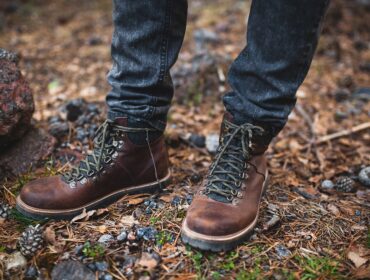As winter sets in and lakes freeze over, a new wellness trend is making waves — quite literally. Across social media and city parks, people are plunging into icy water, claiming better focus, energy, and recovery. Once reserved for elite athletes, cold-water therapy (also known as ice bathing or winter dipping) is now a mainstream wellness ritual that combines physical challenge with mental clarity.
But what’s really behind the hype? And is freezing water actually good for you? Let’s explore why this chilling trend is heating up.
What Is Cold-Water Therapy?
Cold-water therapy involves immersing the body in cold or ice-cold water — typically between 50°F and 59°F (10°C-15°C) — for a short time. It can take the form of a quick plunge in a lake, a home ice bath, or even a cold shower.
The goal is to trigger a controlled “shock” to the body that jump-starts circulation, activates the nervous system, and releases mood-boosting chemicals.
While it might sound extreme, many people say it leaves them feeling refreshed, alert, and surprisingly calm.
Why Everyone’s Talking About It
From celebrities and fitness coaches to everyday wellness enthusiasts, cold plunges have become a symbol of resilience and self-care. Here’s why the trend keeps growing:
-
Visible on social media – TikTok and Instagram are full of people taking the plunge — often in snowy backyards or mountain lakes. It’s become a badge of mental toughness and self-discipline.
-
Simple science, big buzz – Cold exposure constricts blood vessels and then triggers a warm rebound effect, improving circulation and reducing muscle soreness.
-
Mind-body connection – Beyond physical benefits, many fans swear by the mood lift that comes after each dip — the “natural high” that replaces caffeine or screens.
-
Home-wellness movement – With more people creating self-care spaces at home, cold-plunge tubs and portable ice baths have become popular alongside saunas and meditation corners.
What Are the Benefits?
While not all claims are scientifically proven, there’s growing evidence that short cold-water exposure may have real effects on body and mind.
1. Faster Muscle Recovery
Cold water constricts blood vessels, helping reduce swelling and inflammation after workouts. That’s why athletes have long used ice baths to bounce back faster from tough training sessions. For fitness enthusiasts, it’s a low-tech recovery hack that doesn’t require a gym membership.
2. Better Circulation
When you step into icy water, your body works harder to warm itself, causing blood vessels to contract and expand. Over time, this may improve vascular flexibility and overall blood flow.
3. Mood and Mental Clarity
Cold plunges trigger a rush of endorphins and norepinephrine — chemicals linked to alertness and happiness. Many enthusiasts report feeling calmer and more focused afterward. For those struggling with the winter blues, it can be a surprisingly uplifting ritual.
4. Immune and Metabolic Support
Some studies suggest that regular cold exposure activates brown fat — a type of fat that burns calories to generate heat. It may also train your immune system to respond more efficiently to stressors, though research is still emerging.
5. Stress Resilience
Cold water shocks your system — but in a good way. By learning to stay calm during discomfort, you’re training your body’s stress response. It’s a lesson that can carry over into everyday life.
The Winter Dip Appeal
While cold showers and home plunges are great year-round, there’s something uniquely powerful about winter dips.
The icy air, the frozen surface, and the sense of shared challenge create a deep connection between body, mind, and nature. In many northern cultures, from Finland to Canada, winter swimming has been a long-standing tradition — often paired with saunas or hot drinks afterward.
Modern enthusiasts are rediscovering this ancient practice for the same reasons:
-
It’s invigorating — the ultimate “reset” button for a sluggish winter mood.
-
It’s social — many cities now have winter swim clubs and “polar plunge” events.
-
It’s symbolic — a reminder that you can handle discomfort and start the day strong.
Risks and Safety Tips
Cold-water therapy isn’t for everyone. It places sudden stress on the body, so you should consult your doctor before starting — especially if you have heart, blood pressure, or respiratory conditions.
Here’s how to practice safely:
-
Start small. Begin with cold showers before trying full immersion.
-
Ease in slowly. Don’t jump into ice-cold water — let your body adjust.
-
Never go alone. Always have someone nearby when doing outdoor dips.
-
Limit your time. One to three minutes is plenty for beginners.
-
Warm up immediately. Dry off, dress warmly, and sip something hot.
Even for experienced dippers, hypothermia and cold shock are real dangers. Always listen to your body, and end the session if you feel numb, dizzy, or disoriented.
How to Try Cold-Water Therapy at Home
You don’t need a frozen lake to join the trend. Many people are building home cold-plunge setups that are compact, affordable, and safe.
Here’s how to create your own routine:
-
Pick your setup.
-
Ice bath tub – Portable tubs can be filled with cold tap water and ice.
-
Cold shower – End your daily shower with 30-60 seconds of cold water.
-
Chill barrel or trough – Larger options for outdoor setups.
-
-
Set your temperature. Aim for 50°F-59°F (10°C-15°C) to start.
-
Time it right. Two to three minutes is usually enough.
-
Make it a ritual. Play calming music, breathe deeply, and stay present.
-
Warm up gently. Step into a cozy robe or wrap up in a heated towel afterward.
If you’re creating a wellness space at home, pair your plunge tub with accessories like:
-
Insulated changing robes
-
Waterproof timers
-
Wooden bath mats or benches
-
Epsom salts and essential oils (for post-dip warm baths)
-
Compact heaters or saunas for alternating hot-cold therapy
This mix turns your bathroom, patio, or garage into a small recovery retreat — perfect for winter weekends or self-care gifts.
Cold-Water Therapy as a Lifestyle Trend
Cold-water therapy represents more than a fitness fad — it reflects a larger shift toward mindful discomfort and natural resilience.
Instead of high-tech recovery gadgets, people are turning to primal experiences that reconnect them to their bodies. A quick morning plunge replaces the caffeine rush, while group winter dips become social rituals that build community and courage.
Brands have noticed too. From minimalist plunge tubs to subscription-based ice-delivery kits, the market for cold-exposure gear has surged. Even interior designers are including “wellness corners” in modern homes, where a small sauna or plunge tub sits beside plants and soft lighting — a blend of Nordic simplicity and self-care luxury.
For gift buyers, cold-plunge accessories like thermal robes, insulated mugs, and bath thermometers make thoughtful additions to any wellness-themed bundle.
The Science: Separating Fact from Hype
While the trend feels transformative, it’s worth keeping expectations realistic. Research shows short-term benefits in recovery, alertness, and mood, but not all claims hold up.
-
Muscle recovery: Supported by moderate evidence.
-
Weight loss and immunity: Still inconclusive.
-
Mental health: Promising but needs more study.
That said, for many people, the real reward isn’t scientific — it’s experiential. The act of facing the cold, breathing through discomfort, and stepping out stronger can feel empowering on its own.
Final Thoughts
Cold-water therapy is one of those rare wellness practices that’s both ancient and trending. Whether it’s a quick morning cold shower or a bold winter lake dip, the experience teaches you something profound about resilience and calm under pressure.
As with any health trend, balance is key — start slow, stay safe, and focus on consistency rather than extremes.
And if you’re looking to bring this ritual home, modern cold-plunge tubs and recovery accessories make it easier than ever to turn your wellness space into a private spa — no frozen lake required.
Because sometimes, the best way to warm up to winter is to take the plunge.
FAQs: Cold-Water Therapy
1. How long should I stay in an ice bath?
Start with 1-2 minutes and gradually increase to a maximum of 5 minutes. Beginners should never exceed 10 minutes.
2. What’s the ideal water temperature for a cold plunge?
Most experts recommend 50°F to 59°F (10°C-15°C). Going colder adds risk without added benefit for most people.
3. Can cold-water therapy help with anxiety or depression?
It may help short-term mood and stress resilience by increasing endorphins and norepinephrine. However, it’s not a substitute for mental health treatment.
4. How often should I do cold-water therapy?
Two to three times a week is a good starting point. Some enthusiasts do it daily, but consistency matters more than frequency.
5. Are there people who shouldn’t try cold plunges?
Yes — those with heart conditions, high blood pressure, or respiratory issues should consult a doctor first. Pregnant individuals should also avoid extreme cold immersion.





